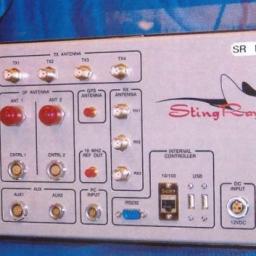
Are you the proud owner of a snazzy, new smartphone? Thrilled with the convenience and utility of having this clever device in your pocket, connecting you to friends, colleagues, and information? Guess who else is excited about your purchase? Law enforcement.
Meet the Stingray, essentially a honey pot, fake cell tower. Your phone connects to it, and you're done.A stingray is a false cell phone tower that can force phones in a geographical area to connect to it. Once these devices connect, the stingray can be used to either hone in on the target's location or, with some models, actually eavesdrop on conversations, text messages, and web browser activity. It's not clear how much the police cooperate with the cell phone carriers on this - in at least some cases, the police have gone to carriers with requests for information, while in others they seem to have taken a brute-force approach, dumping the data of every single user on a given tower and then sorting it to find the parties they're interested in tracking. Stingrays can be used to force the phone to give up its user details, making it fairly easy for the police to match devices and account holders.
[Ed. note: Time to give up your cellphone and go back to using public phone booths? Oh, wait "]
 Are you the proud owner of a snazzy, new smartphone? Thrilled with the convenience and utility of having this clever device in your pocket, connecting you to friends, colleagues, and information? Guess who else is excited about your purchase? Law enforcement. Meet the Stingray, essentially a honey pot, fake cell tower. Your phone connects to it, and you're done.
Are you the proud owner of a snazzy, new smartphone? Thrilled with the convenience and utility of having this clever device in your pocket, connecting you to friends, colleagues, and information? Guess who else is excited about your purchase? Law enforcement. Meet the Stingray, essentially a honey pot, fake cell tower. Your phone connects to it, and you're done.
No, what we need is device-level end-to-end in-call encryption. Quite a few projects are working on this or have already implemented it; this is a known vulnerability that corporations and TLAs already attempt to address. (After all, if they can "sting" normal citizens, they need to make sure some foreign spy isn't doing it to them.) Encrypted phone calls are certainly possible, though expensive when I last looked into it, and were common years ago. Of course, that doesn't save you from the location triangulation problem - but then, better not to use cellphones at all if you're worried about being physically found.
Is this just now coming to people's attention somehow? Or have I missed something new about this story? This is a nice writeup, though, kudos for that. I guess it's good that the issue is getting more attention no matter what - this sort of thing needs to end.